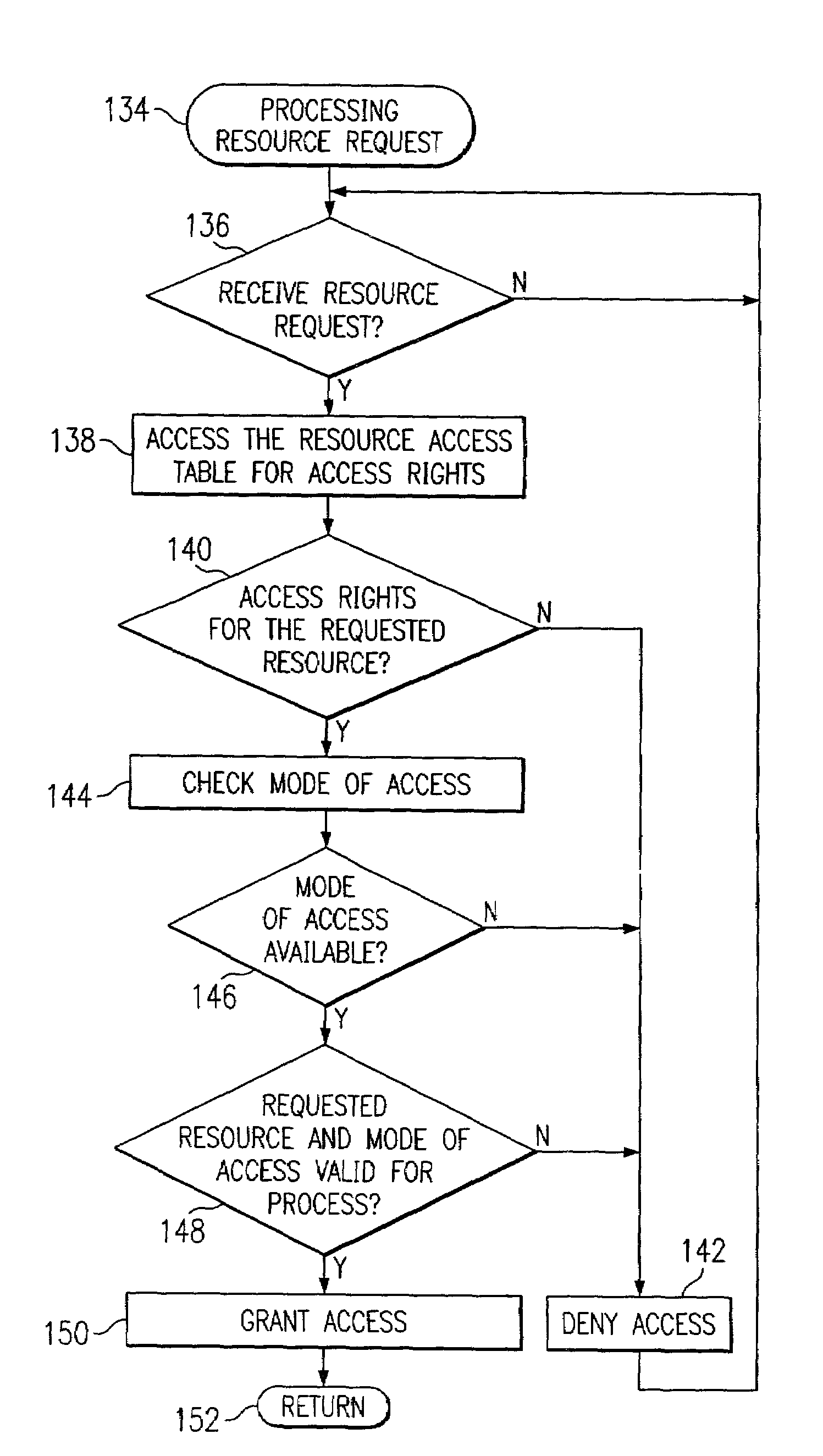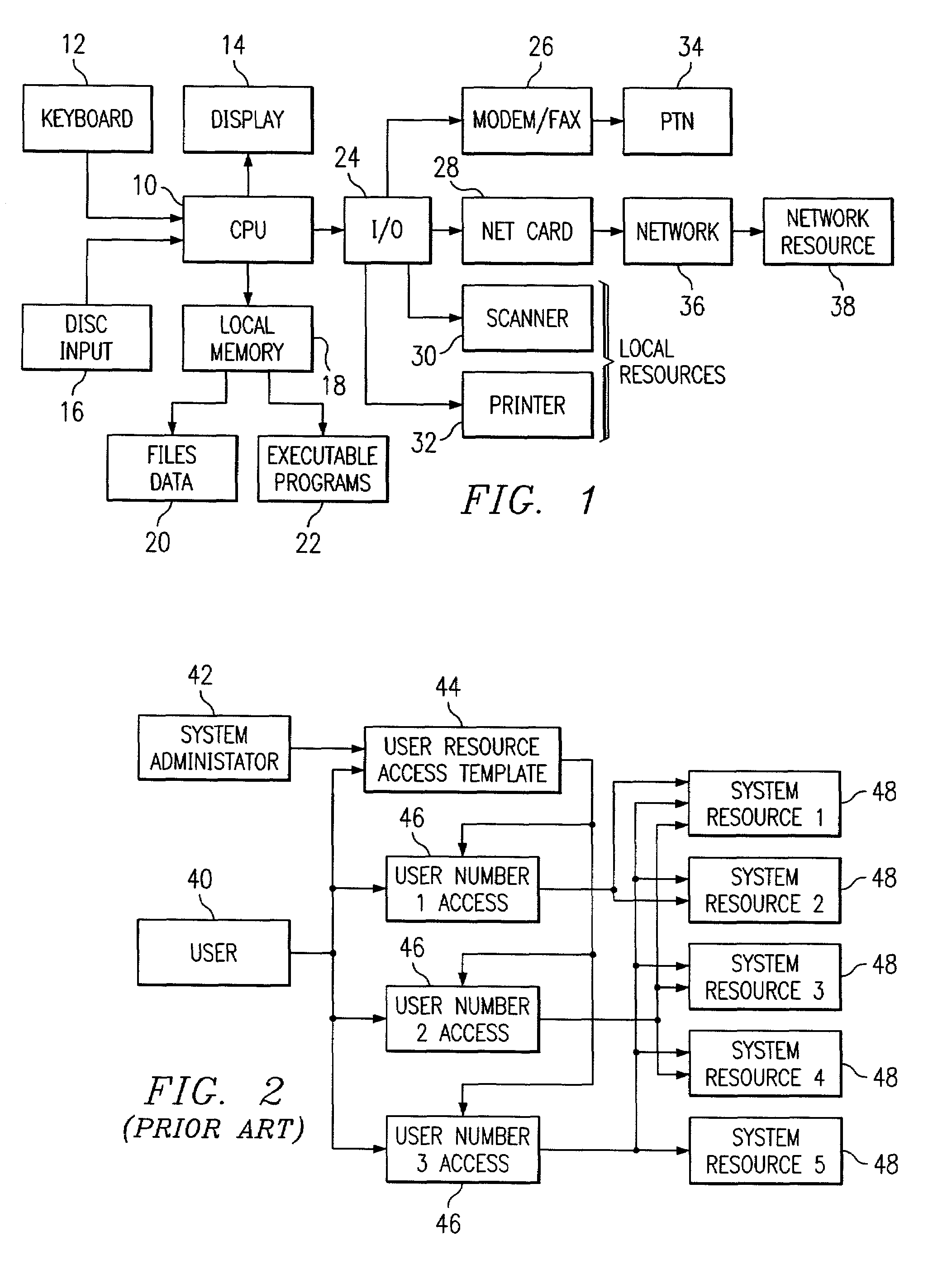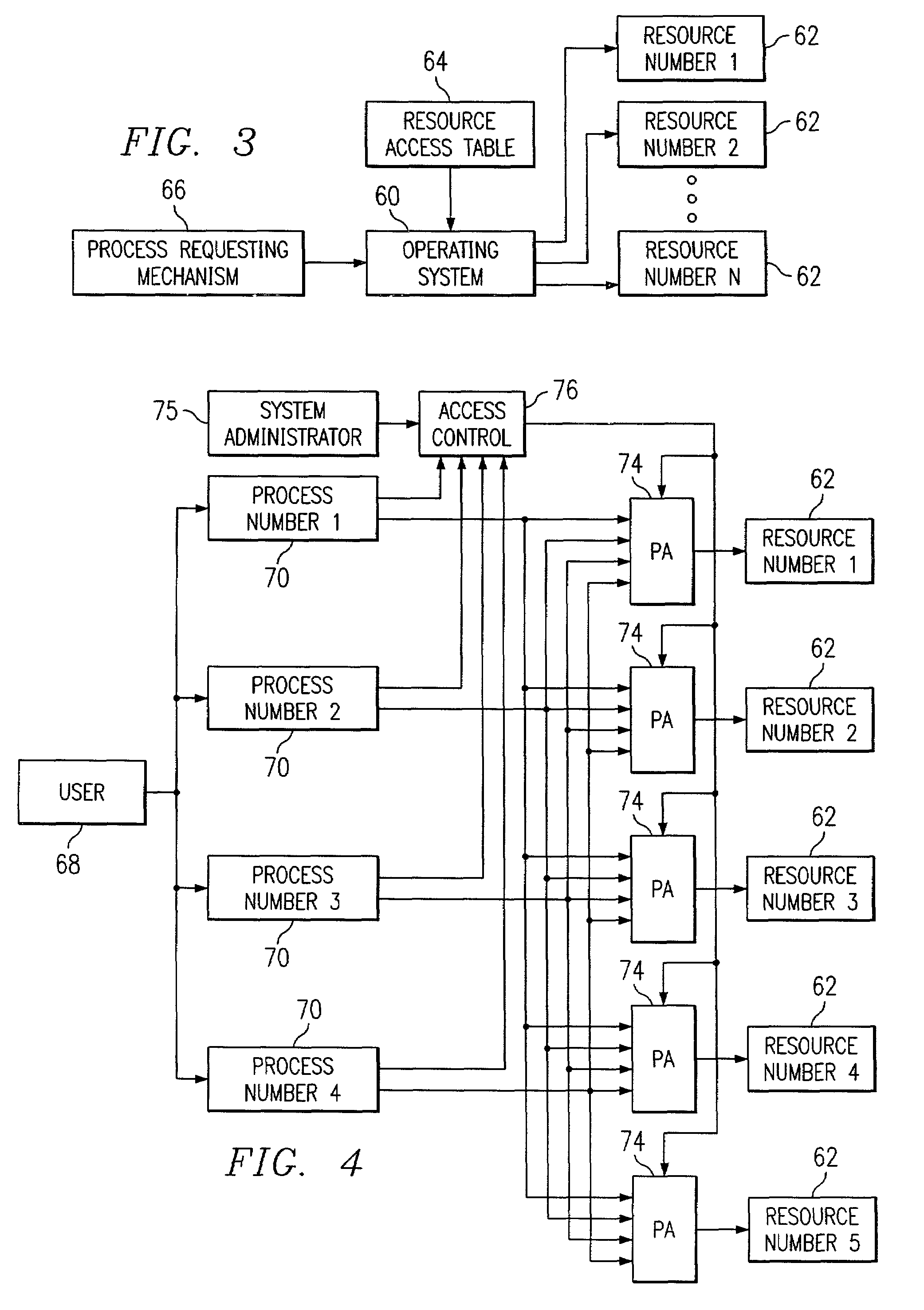Method and apparatus for implementing process-based security in a computer system
a computer system and process-based technology, applied in the field of process-based systems, can solve the problems of user now having full access to resources, user can bypass the system, and not be very secure, and achieve the effect of reducing resources and only imposing a minimal burden on system resources
- Summary
- Abstract
- Description
- Claims
- Application Information
AI Technical Summary
Benefits of technology
Problems solved by technology
Method used
Image
Examples
example no.1
EXAMPLE NO. 1
[0073]Referring now to FIG. 11, suppose the user Q is operating in the home directory and wishes to delete a file xyz. In FIG. 11, the perspective is that of the operating system. The routine begins with the start block 240 and proceeds to function block 242 wherein the operating system (OS) receives a request to run DEL program. Thereafter the OS checks in block 244 whether the current user is allowed a DEL command. If not, the flow follows the N path and returns to enter block 242. If so, the flow proceeds to block 246 to load the DEL command and fetch the corresponding access rights from the resource access table (RAT) 166. In this case the RAT 166 entry is the statement: / HOME / $U / $P which defines access rights in the HOME directory for the $U current user within which access is allowed $P from this point on, i.e., is unrestricted in directory depth per Table 3.
[0074]Continuing with FIG. 11, in the next step, at decision block 248, the OS determines whether the acces...
example # 2
EXAMPLE #2
[0075]Suppose the user is operating in the HOME directory, and wishes to run a word processor (e.g. WordPerfect). The word processor program (application or process) is in the directory: / PROGRAMS / WP / WP.EXE. Here, the resource access table statement is: / HOME / $U / $S.WP, where $S is used as an intervening suffix. This statement limits access to files in the user's home directory ( / HOME / $U / ) that end in the characters .WP ($S.WP).
[0076]It will be appreciated in the foregoing example that any resource can be moved to any place in an execution path it is desired, merely by defining the access rights for that path in the Resource Access Table. Thus, the access rights “move” with the new placement of the resource. Further, many resources, e.g., utility programs, can be wild carded into part of an execution path. In effect, these programs are executed, not out of the original program or process but out of the resource access table 166. This provides a simple way to limit access ri...
example no.3
EXAMPLE NO. 3
[0078]Consider a web server (WS) which can execute any common gateway interface (CGI) serving a plurality of companies, e.g., A, B, C, D, E and F. Prefixing is used to distinguish whose CGI is allowed execution (e.g., ABC / CGI for access to ABC / DATA directory but which may exclude DEF / CGI) by substitution according to a $E(#) meta symbol that identifies the path that is executable out of the original structure in the RAT. In the RAT, as illustrated in Table 4 hereinbelow, it is seen that there are two kinds of entries instead of one: one statement for the web server, another for the CGI for which access rights are defined. Table 4 illustrates a fragment of the RAT for Example 3.
[0079]
TABLE 4Web ServerCGIRights / HTTP / PROGRAMS / $D / $PExecution / PROGRAMS / $D / $P$E(2) / DATA / $PRead, Write
Here, the path / PROGRAMS / ABC is granted access, according to the statement $E(2) / DATA / $P.
[0080]The resource access table 166 entries, thus modified by meta symbols, as described hereinabove, define ...
PUM
 Login to View More
Login to View More Abstract
Description
Claims
Application Information
 Login to View More
Login to View More - R&D
- Intellectual Property
- Life Sciences
- Materials
- Tech Scout
- Unparalleled Data Quality
- Higher Quality Content
- 60% Fewer Hallucinations
Browse by: Latest US Patents, China's latest patents, Technical Efficacy Thesaurus, Application Domain, Technology Topic, Popular Technical Reports.
© 2025 PatSnap. All rights reserved.Legal|Privacy policy|Modern Slavery Act Transparency Statement|Sitemap|About US| Contact US: help@patsnap.com



